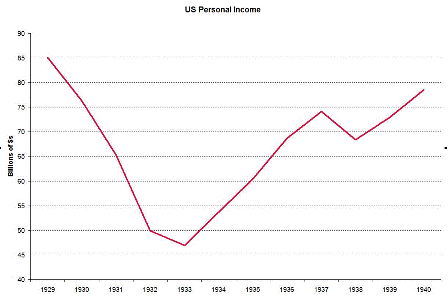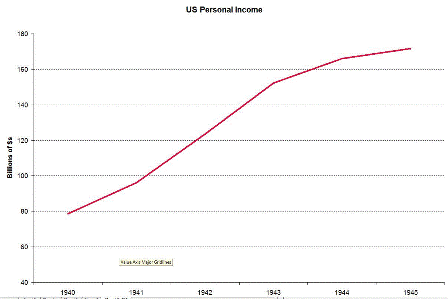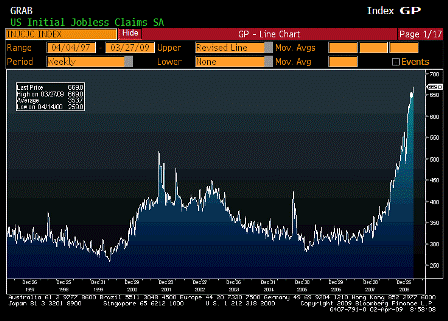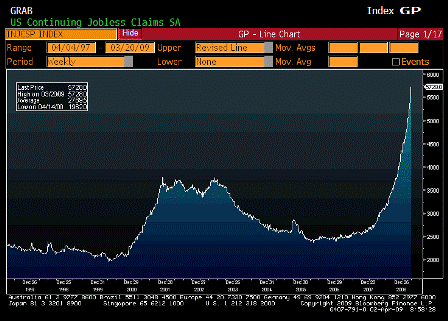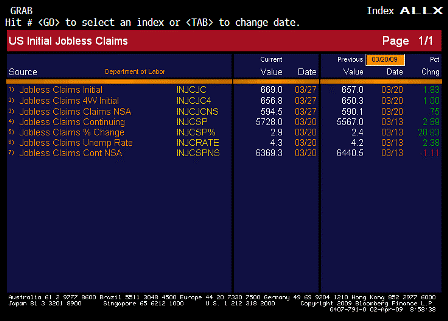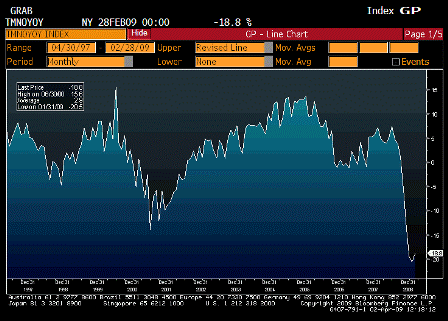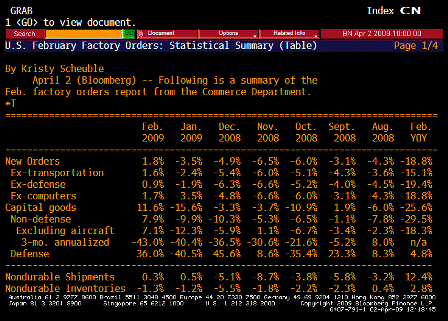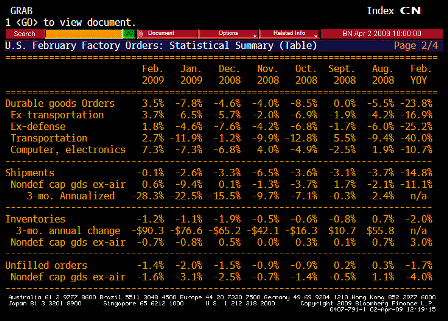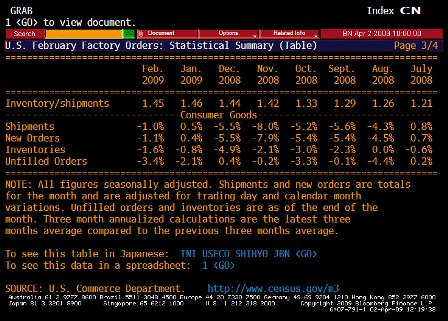[Skip to the end]
by Emily Kaiser
Apr 2 (Reuters) —The IMF was told its war chest will be boosted by $500 billion and it will receive another $250 billion in special drawing rights, the agency’s synthetic currency.
Multilateral development banks including the World Bank will be enabled to lend at least $100 billion more.
Thanks, IMF funding functions very much much like deficit spending.
Hearing talk of flat q2 GDP.
The great Mike Masters inventory liquidation that triggered the sudden negative growth ended late December.
The rising deficit spending and the new quarter seems to be bringing new buyers into equities and the rest of the credit structure.
The Obamaboom seems in progress- strong financial markets, rising energy costs, and painfully high unemployment.
Hardly the outcome they are shooting for.
Karim writes:
- Initial claims up 12k to new high for the cycle (4wk avg moves from 650k to 657k)
- Rise in continuing claims continues to astound-up another 161k this week to another all-time high-cumulative rise in past 4 weeks is 654k
- May signify upside risk to consensus on unemployment rate tomorrow (consensus at 8.5% vs prior 8.1%)
Some early snippets out of G20:
- Greater funding for IMF to be targeted at EM countries and trade finance has EM risk on fire in past 24hrs
- Agreement that OECD will publish list of ‘tax havens’ and that Swiss will be on the black list has Chf quite a bit weaker
- Russia proposal that IMF or G20 conduct a study on creating a new intl reserve currency generating headlines and some USD weakness; but IMF and OECE both state they see no change in USD status (1 interpretation that Russia went into meeting long Eur/Usd)
New orders received by U.S. factories rose in February, government data showed on Thursday, breaking a six-month streak of declines and bolstering hopes the economy may be beginning to crawl out of the depths of a recession.
The Commerce Department said factory orders rose 1.8 percent in February after a revised 3.5 percent drop in January, initially reported as a 1.9 percent decline.
Economists polled by Reuters had expected a February increase of 1.5 percent.
Orders for non-defense capital goods excluding aircraft, seen as a measure of business confidence, jumped 7.1 percent after a steep 12.3 percent drop in January.
Orders for durable goods rose 3.5 percent, revised from the previously published 3.4 percent increase, while orders for nondurable goods edged up 0.3 percent.
Inventories decreased 1.2 percent, down for a sixth consecutive month. That was the longest streak since March 2003-January 2004.
[top]
